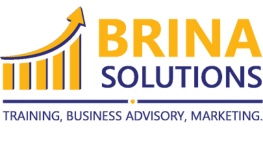
In today’s rapidly evolving business landscape, corporate training is crucial for fostering a skilled and adaptable workforce. Emerging trends in training focus on blending technology, personalization, and future-ready skills to prepare employees for the challenges of tomorrow. Here’s how these trends are shaping the future of corporate learning.
1. Microlearning: Bite-Sized Learning for Maximum Retention
Microlearning delivers information in small, digestible modules, making it easier for employees to absorb and apply knowledge. This trend aligns with busy schedules and the need for just-in-time learning.
Benefits:
- Reduces cognitive overload.
- Allows employees to learn at their own pace.
- Enhances retention with focused, actionable content.
Example: A sales team receives 5-minute video tutorials on negotiation techniques, which they can review before client meetings.
2. Gamification in Training Programs
Gamification involves incorporating game-like elements such as leaderboards, badges, and challenges into learning programs. This approach boosts engagement and motivation while fostering friendly competition.
Benefits:
- Increases participation rates.
- Encourages collaboration and teamwork.
- Provides instant feedback through progress tracking.
Example: Employees earn points for completing cybersecurity training modules, with top performers recognized company-wide.
3. Personalized Learning Paths
Customization is a key trend in corporate training. Personalized learning paths cater to individual skill gaps, roles, and career goals, ensuring relevance and engagement.
Benefits:
- Targets specific employee needs.
- Accelerates skill development.
- Enhances employee satisfaction and retention.
Example: A marketing professional is assigned courses on data analytics, while a graphic designer focuses on advanced design software training.
4. Integration of Artificial Intelligence (AI)
AI-powered platforms analyze employee performance to recommend tailored learning opportunities. AI also enables virtual assistants to provide real-time support during training sessions.
Benefits:
- Automates training personalization.
- Monitors progress and identifies skill gaps.
- Enhances engagement with interactive, adaptive learning modules.
Example: An AI tool identifies weak areas in an employee’s coding skills and suggests targeted tutorials and practice exercises.
5. Focus on Soft Skills Development
As automation takes over routine tasks, soft skills like emotional intelligence, communication, and problem-solving are becoming essential. Training programs now emphasize developing these human-centric competencies.
Benefits:
- Improves leadership and team dynamics.
- Prepares employees for customer-facing roles.
- Boosts adaptability in a rapidly changing work environment.
Example: Workshops on conflict resolution help employees manage workplace challenges effectively.
6. Blended Learning Models
Blended learning combines online and in-person sessions, offering flexibility while retaining the benefits of face-to-face interaction. This hybrid approach accommodates diverse learning preferences.
Benefits:
- Reduces travel and scheduling constraints.
- Allows for practical application during in-person sessions.
- Scales easily for large teams.
Example: Employees complete virtual modules on compliance before attending an on-site workshop for scenario-based exercises.
7. Virtual Reality (VR) and Augmented Reality (AR) Training
Immersive technologies like VR and AR create realistic simulations for hands-on learning. This trend is particularly effective in fields such as manufacturing, healthcare, and customer service.
Benefits:
- Provides risk-free practice environments.
- Enhances engagement through realistic experiences.
- Builds confidence in handling real-world scenarios.
Example: A manufacturing team uses VR to practice assembling complex machinery, minimizing the risk of errors in production.
8. Upskilling and Reskilling for Future-Ready Workforces
With rapid technological advancements, upskilling and reskilling are critical to preparing employees for evolving roles. Training programs now emphasize equipping teams with future-focused skills.
Benefits:
- Increases organizational agility.
- Ensures relevance in competitive markets.
- Reduces the need for external hiring.
Example: A retail company offers data analytics courses to store managers, preparing them for e-commerce transitions.
9. Emphasis on Diversity, Equity, and Inclusion (DEI)
DEI training fosters a workplace culture that values diversity and promotes equity and inclusion. These programs help employees understand unconscious biases and create a more collaborative environment.
Benefits:
- Improves employee morale and belonging.
- Enhances team collaboration across diverse groups.
- Strengthens brand reputation as an inclusive employer.
Example: Interactive workshops teach employees how to recognize and address bias in hiring and daily interactions.
10. Measuring Training Effectiveness Through Analytics
Data analytics plays a crucial role in assessing the impact of corporate training programs. Businesses use metrics to evaluate engagement, knowledge retention, and behavioral changes.
Benefits:
- Identifies successful training modules and areas for improvement.
- Aligns training outcomes with business objectives.
- Demonstrates ROI to stakeholders.
Example: A hospitality company tracks customer satisfaction scores before and after service training to measure effectiveness.
Conclusion: Building the Workforce of Tomorrow
Corporate training trends in 2025 focus on empowering employees with the skills they need to adapt and thrive in a fast-changing world. By embracing innovative techniques like AI, gamification, and immersive technologies, businesses can create a skilled workforce ready to tackle future challenges.
Want to future-proof your workforce? Brina Solutions offers cutting-edge corporate training programs tailored to your organization’s needs. Contact us today to build a skilled and competitive team!







Leave a Reply